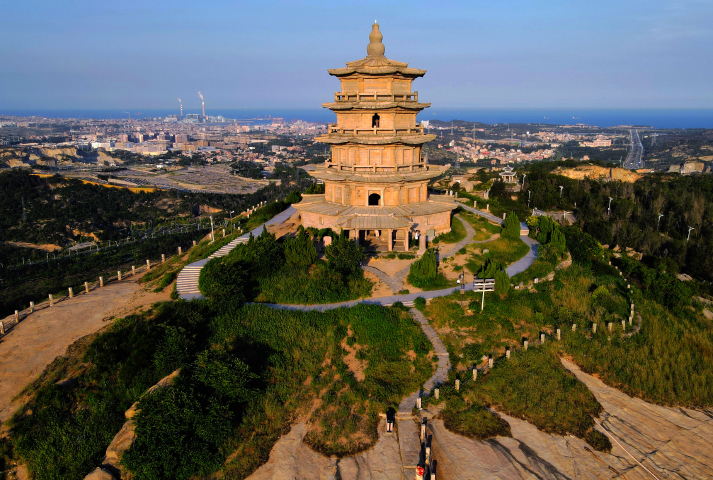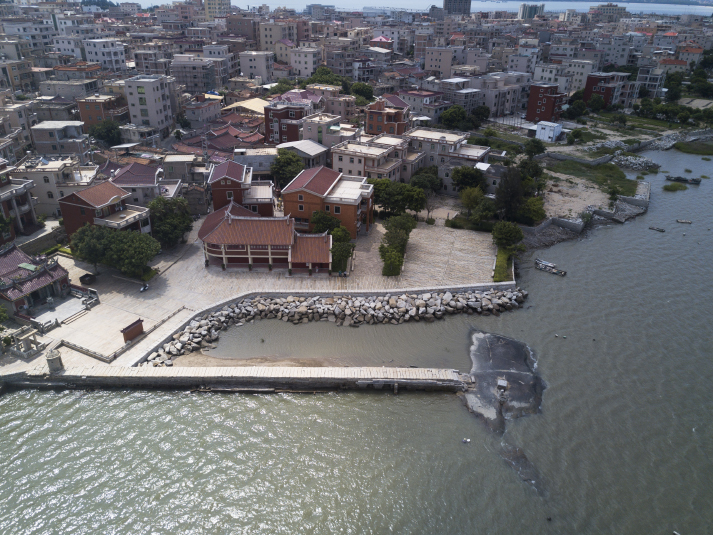| Lifestyle |
| Harbor city makes it into World Heritage List | |
|
|
 The Wanshou Pagoda in Quanzhou, Fujian Province, on July 5 (XINHUA)
Liu Zaiye, a freelance photographer, recently received several orders to take photos at Kaiyuan Temple in Quanzhou, a coastal city in Fujian Province. With its buildings featuring exquisite carvings first constructed more than 1,300 years ago, the place is a stunning example of Chinese architecture and art. "In the past, the temple was mostly only known to locals like me. But with the influence of social media, many tourists now come to check it out," Liu said. Liu's dream for the site to be internationally recognized came true in July, when Quanzhou was granted UNESCO World Cultural Heritage status, bringing the total number of the country's UNESCO World Heritage sites to 56. UNESCO accepted "Quanzhou: Emporium of the World in Song-Yuan China" as a cultural property on its World Heritage List amid the 44th Session of the World Heritage Committee. The event was held on July 16-31 in the provincial capital Fuzhou, and saw a total of 45 candidates reviewed for entry into the UNESCO World Heritage List  An ancient ferry place at the Shihu Dock in Quanzhou, Fujian Province, on July 7 (XINHUA)
Making a comeback Quanzhou was a leading port in China and one of the world's busiest during the Song and Yuan dynasties (960-1368), connecting ancient China to Southeast Asia and beyond. Described by Italian explorer Marco Polo as the largest port in the world, the city was a starting point of China's ancient maritime trading route known as the Maritime Silk Road. "Quanzhou is an example of China's marine culture. It can help other countries realize that China had an open and inclusive attitude to the world in ancient times," said Huang Mingzhen, Curator of the Quanzhou Museum. She said that the city represents peaceful, friendly trade, advocated by the Belt and Road Initiative, a China-proposed global development project consisting of the Silk Road Economic Belt and the 21st-Century Maritime Silk Road. In 1991, a team from UNESCO visited the city, as part of the organization's Maritime Silk Road expedition, in recognition of the role it played, according to UNESCO's official website. This is the second time Quanzhou has applied for inclusion on the World Heritage List. At its 42nd session in 2018, the World Heritage Committee deferred the application of the "Historic Monuments and Sites of Ancient Quanzhou (Zayton)," requesting supplementary information about the sites. At that time, a total of 16 monuments and sites were nominated, including historical sites as well as artifacts of navigation, trade, multi-culturalism, urban construction and land transport. This time, major improvements have been made to the bid, ranging from site management to documentation, according to Zhang Lei, head of the World Cultural Heritage Department at the National Cultural Heritage Administration. The number of heritage sites in this project has increased from 16 to 22. "Also, in collaboration with international professional institutions, major adjustments have been made to the project at a technical level," Zhang said. The sites are protected by institutions, teams from universities and experts specializing in World Heritage protection and archaeology, according to Zhou Zhenping, Vice Mayor of Quanzhou. "We will conduct further research and archaeological studies. I believe the heritage sites in the city will be better protected," she told Xinhua News Agency. The Quanzhou project was China's only UNESCO World Cultural Heritage application at the 44th session. It has now become China's 56th heritage site, along with spectacles such as the Great Wall and the terracotta warriors at the Mausoleum of Emperor Qinshihuang (259-210 B.C.). "Through continuous improvement, the Quanzhou project is now recognized by the international community," Zhang said. Artifact sites Quanzhou is home to over 8 million people, as well as one of the oldest mosques in China and hundreds of ancient Buddhist and Taoist temples. The buildings and sites are related to marine commerce and culture and date back to the days when the Maritime Silk Road entered a prosperous age. For example, the Deji Gate Site, an important landmark in the commercial district in the southern part of the city, consists of the city gate, city walls, ditches, an arch bridge and many other historical artifacts from the 11th to the 20th century. Many Hindu, ancient Christian, Islamic and Jewish inscriptions and Buddhist carvings dating from the 13th to the 14th century, as well as 14th-19th century iron cannons and mines, have been unearthed there. Luoyang Bridge is the earliest existing cross-sea girder bridge in China built during the Song Dynasty. It is 731 meters long and has 44 ship-shaped piers. It is one of the four most famous ancient bridges in China. Another of the six new additions to the project, a porcelain site in Dehua County, one of China's top ceramic producers, demonstrates booming overseas trade as porcelain was a major export in the Song and Yuan dynasties. To publicize the sites, Quanzhou has compiled a Chinese-English guide brochure and copies have been distributed to travel agencies, tour guides and major hotels. Bilingual audio commentaries are also available online. CA (Printed Edition Title: Ancient City, New Glory) Comments to zanjifang@chinafrica.cn |
|
||||||||||||||||||||||||||||||
|